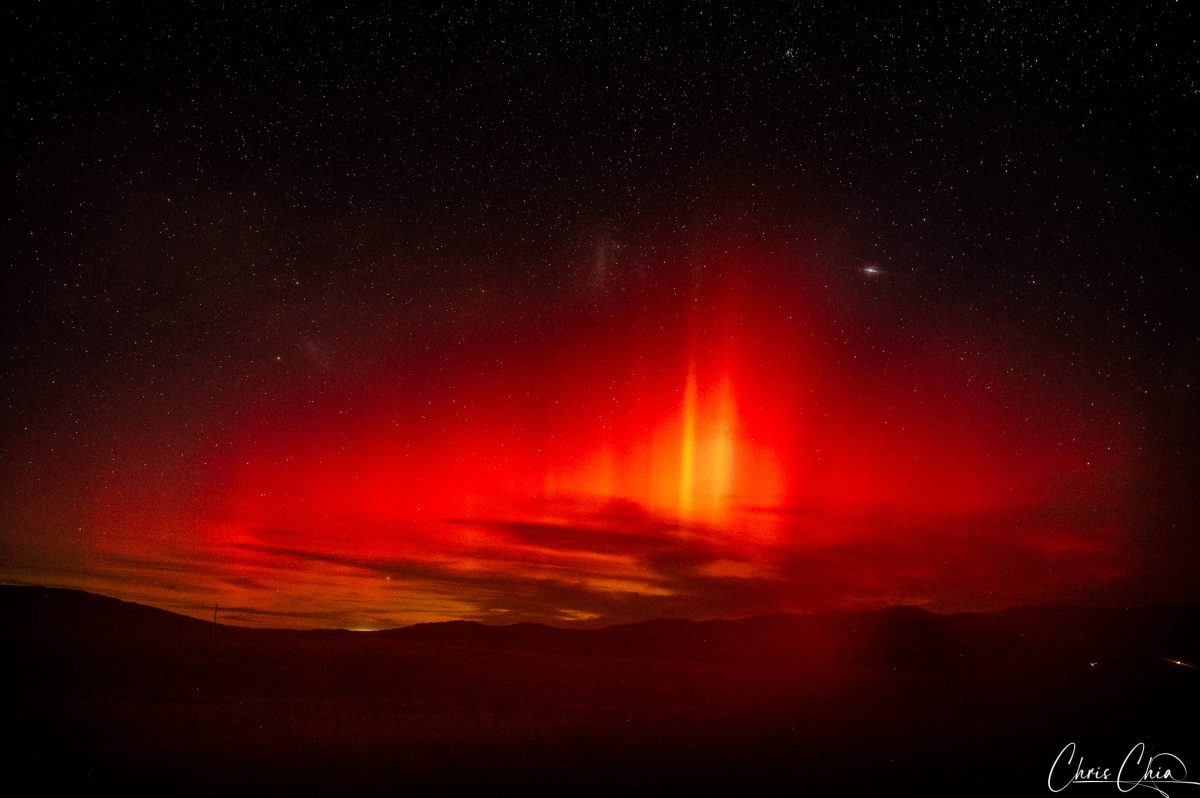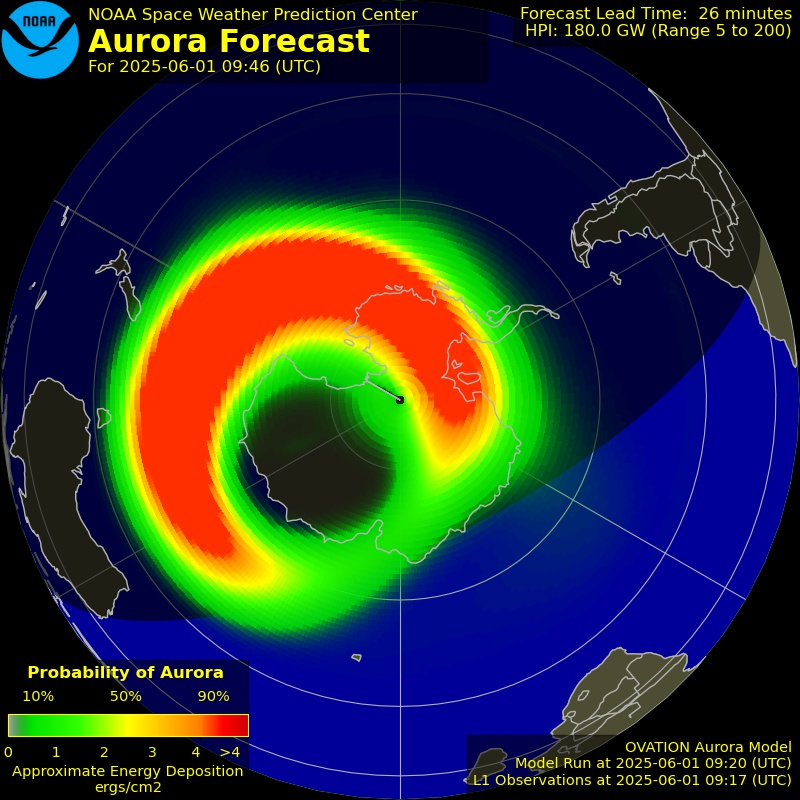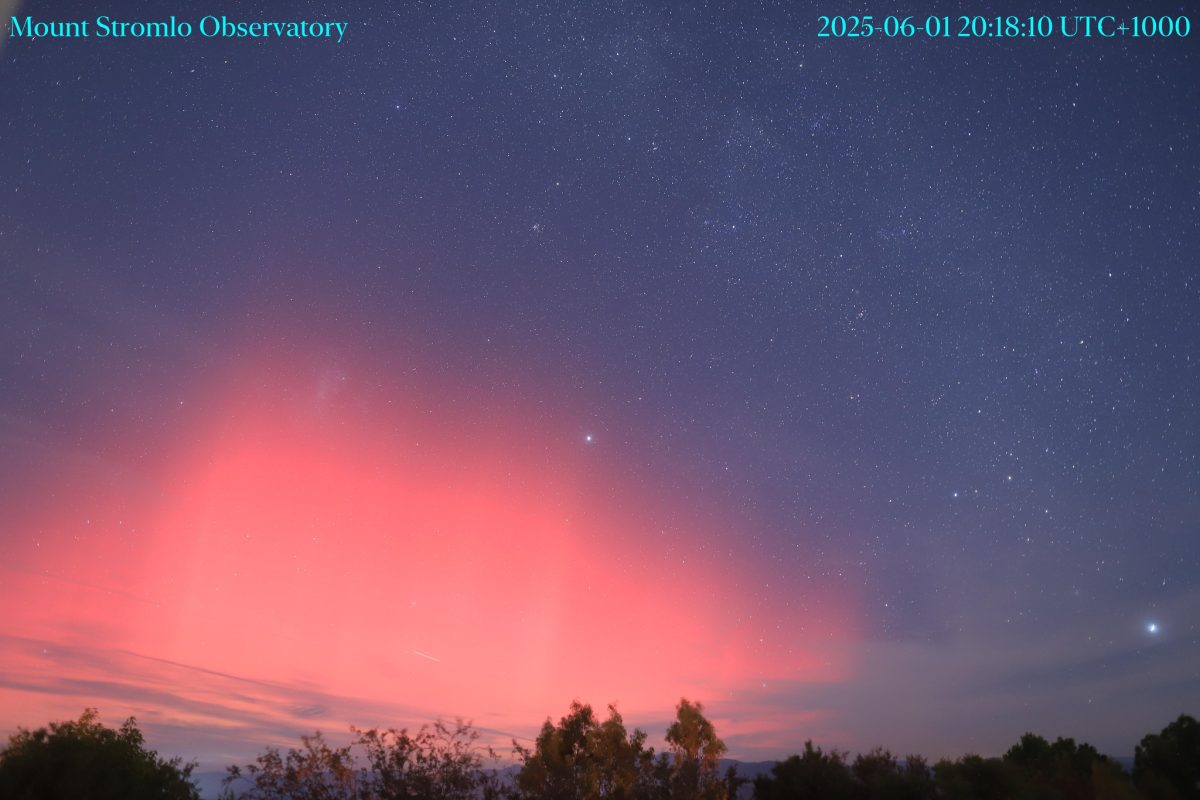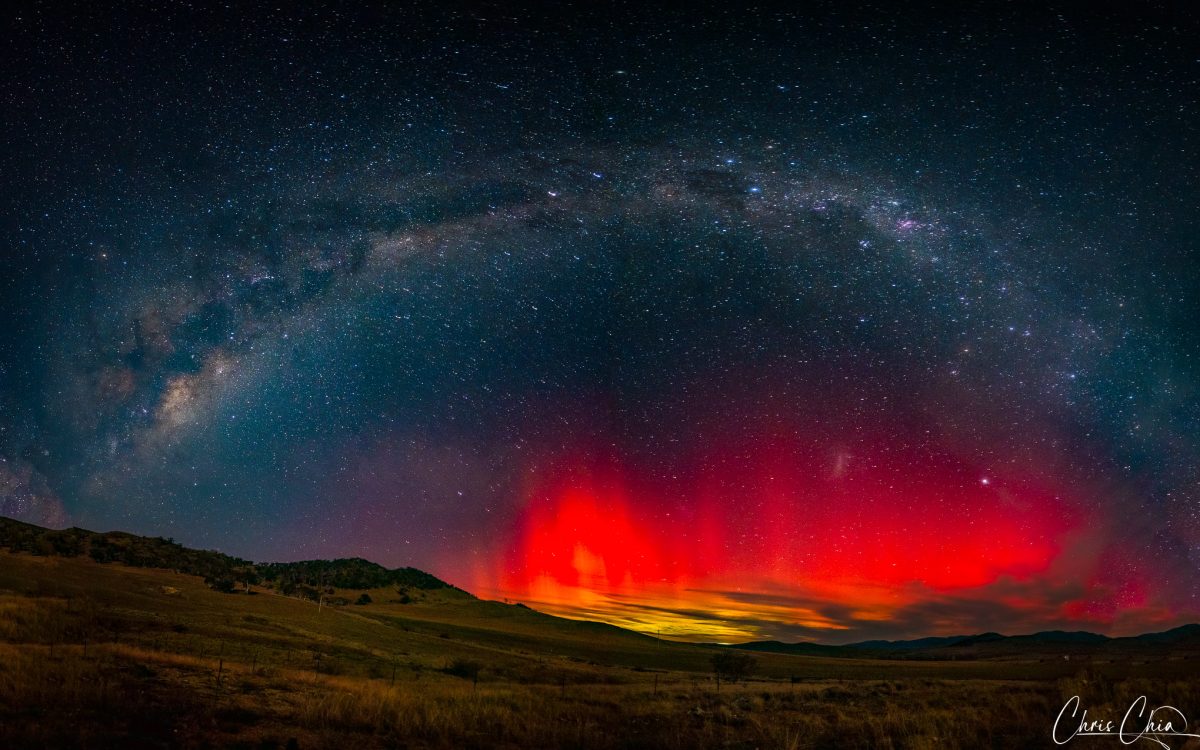
The Aurora Australis, captured on 2 June near Bredbo, NSW. Photo: Chris Chia.
Australia’s night sky was draped with curtains of red and orange light over the weekend in one of the strongest Aurora Australis displays we’ve seen in a long time.
The US National Oceanic and Atmospheric Administration (NOAA) issued a series of alerts on 1 and 2 June for a severe geomagnetic storm (classified as ‘G4’), followed by similar alerts from the Bureau of Meteorology’s Space Weather Centre.

The NOAA’s Aurora Australis forecast for 1 June. Photo: Dr Brad Tucker, Facebook.
According to ANU astrophysicist Dr Brad Tucker, “storms of this magnitude are on the rarer side, meaning this is a great chance to be on the lookout for the aurora”.
On 1 June, he said the camera at the Mount Stromlo Observatory in Canberra picked up the orange-pinky glow just after 8 pm.
“A note that cameras, especially proper cameras (not just phone cameras), are much better at picking up the aurora than your eyes,” he wrote in a Facebook post.
“They are more sensitive, so the detail and colour range is always better in a photo, so don’t be disappointed if it doesn’t look as strong to your eye. It is still worth taking a look and trying to take a photo.”
However, the following night (2 June), the observatory’s sky camera not only showed a similarly “massive display in the early part of the night” but he said “many people” were reported seeing it with the naked eye.
“Unfortunately, it settled pretty quickly and the clouds rolled in, but there remains another chance tonight (3 June) as the current storm is still going!”

The Aurora Australis from the Mount Stromlo Observatory, ACT. Photo: Dr Brad Tucker, Facebook.
The auroras, known in the Northern Hemisphere as the Aurora Borealis and in the Southern Hemisphere as the Aurora Australis, are caused by “coronal mass ejections” (CMEs) of magnetic energy from the Sun.
When this hits the Earth, it excites or ‘charges’ the gases in our atmosphere, causing them to glow, similar to how a neon sign works.
Both hemispheres were treated to the displays over the past few days, and in its latest update, the NOAA extended its warning for G3 storms through today (3 June) due to “persistent CME activity”.
For local photographer Chris Chia, stationed out at Bredbo on Monday evening, the results were “the best I’ve had”.
“After so many years chasing the aurora in Canberra – tonight was the best I had,” he wrote on Facebook.
“The lady dances and is visible to the naked eye! The beams and the Milky Way were simply stunning. It’s just beyond words.”

The Aurora Australis, as seen from near Bredbo, NSW, on 2 June. Photo: Chris Chia.
He subsequently told Region the display was easily visible to the naked eye from about 8 pm, in “any south-looking position in a dark area”.
“The road to Yass is good – make sure there are no high mountains blocking your direction … A camera or phone with night mode and long shutter speed, on a tripod, will give you very desirable shots.”
Other photographers captured clear photos from Yass, as well as Victoria and Tasmania, while some reported seeing it from as far north as Wagga, Wollongong, and even Tamworth.
Original Article published by James Coleman on Region Canberra.







